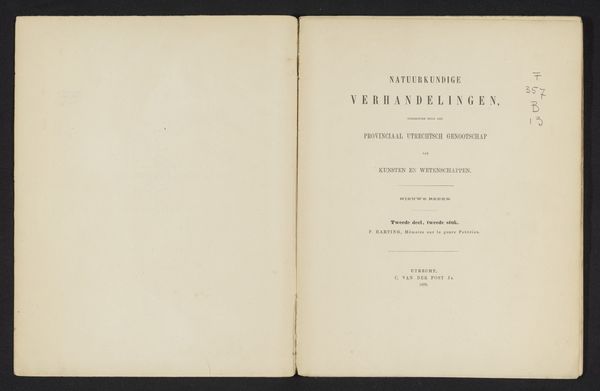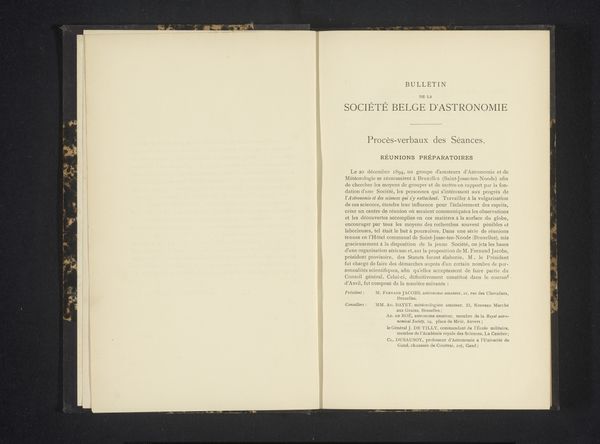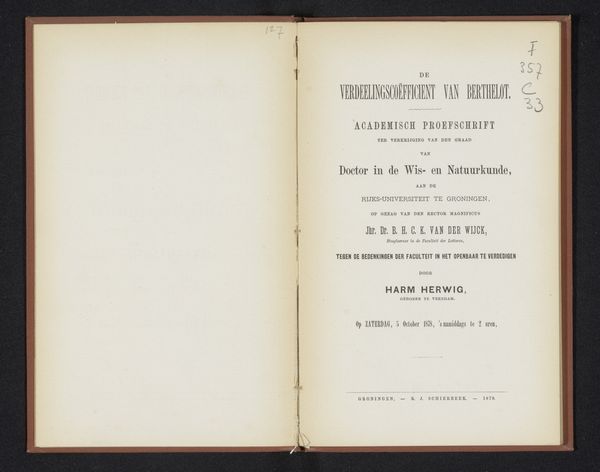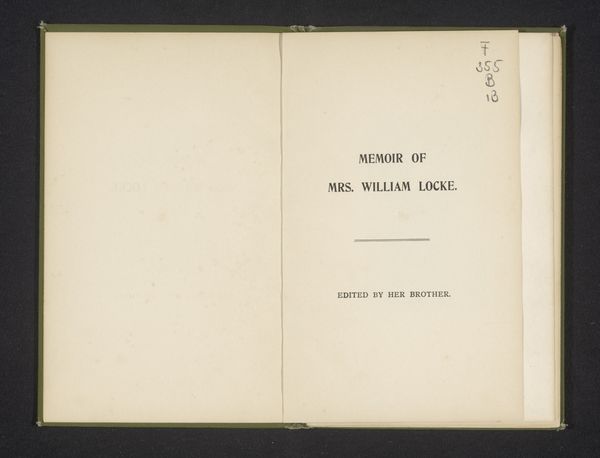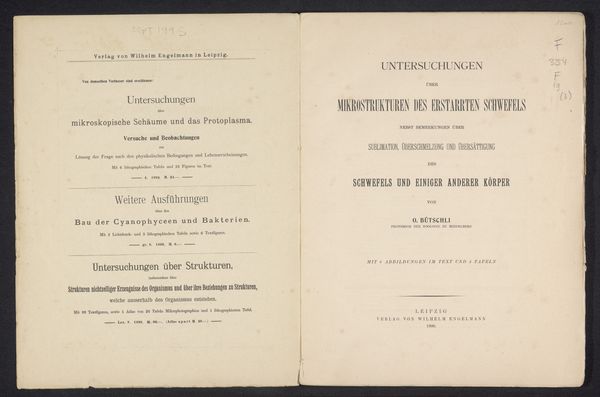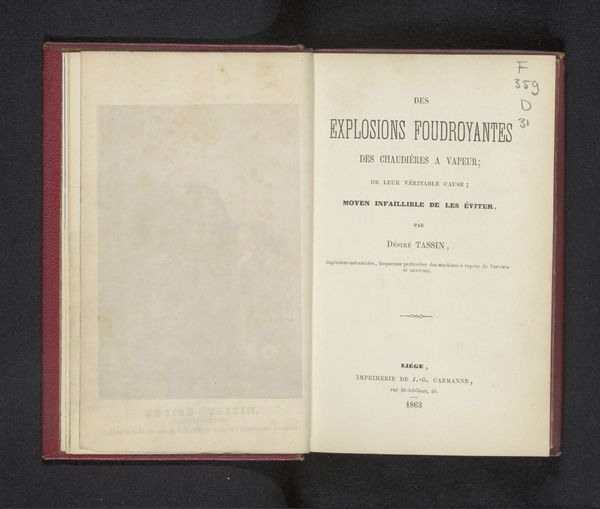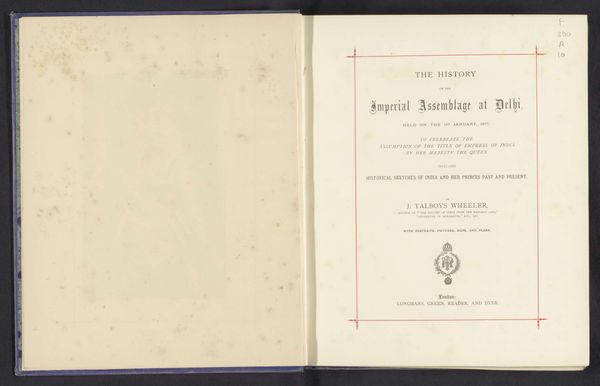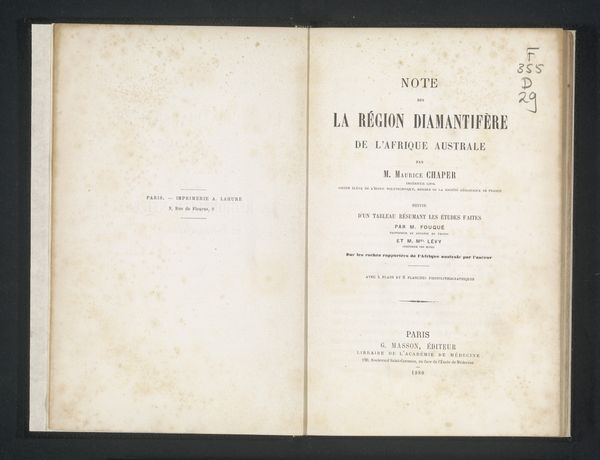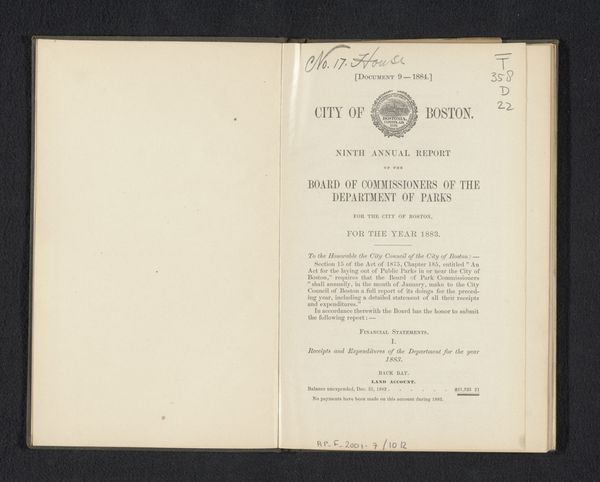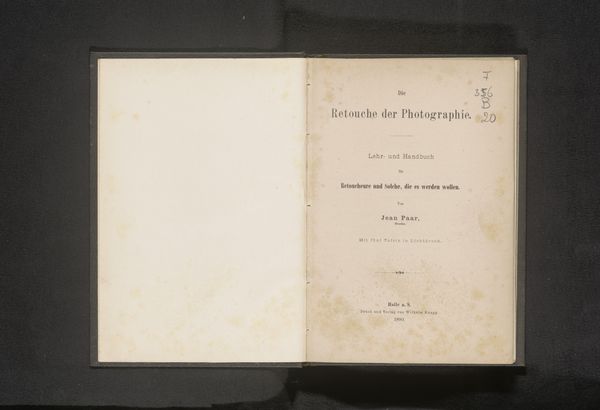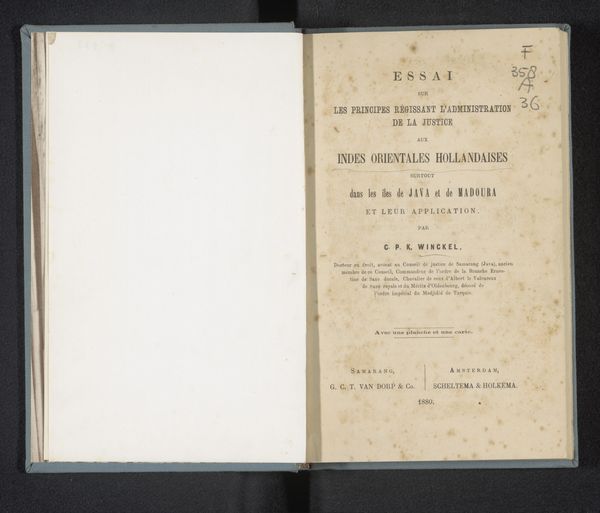
Die Topographie des menschlichen Gehörorganes mit besonderer Berücksichtigung der Korrosions- und Rekonstruktionsanatomie des Schläfenbeines 1904
0:00
0:00
print, paper, typography
#
aged paper
#
homemade paper
#
script typography
#
paperlike
# print
#
book
#
hand drawn type
#
personal journal design
#
german-expressionism
#
paper
#
personal sketchbook
#
typography
#
hand-drawn typeface
#
thick font
#
delicate typography
Dimensions: height 368 mm, width 290 mm, thickness 13 mm
Copyright: Rijks Museum: Open Domain
Editor: Here we have Adolf Schöemann’s “Die Topographie des menschlichen Gehörorganes…” from 1904, a printed book. It looks like the title page. There’s something so simple, yet authoritative about the typography. How do you interpret the impact of something like this? Curator: This is a powerful symbolic arrangement. Typography, like all visual language, carries cultural memory. The stark font, chosen at the dawn of German Expressionism, isn’t merely informative; it suggests a shift in understanding. Editor: A shift towards what? The body? Science? Curator: Indeed. But consider the choice of the Gothic font juxtaposed against the objective anatomical information. The symbolic weight of Gothic script evokes tradition, but is being applied to new scientific and medical fields, where we see new information coming forth to disrupt that tradition. How might those two distinct symbolic worlds collide? Editor: It creates a tension, almost like the old ways being used to present revolutionary ideas. It speaks to both the reverence for the past and the anticipation of the future, clashing yet coexisting. Curator: Precisely. What do you think that clash tells us about the era's understanding of the body and the self? Editor: Maybe it implies a desire to understand ourselves through the lens of scientific rigor but held up to these culturally inherited modes of visualising knowledge… It’s a good reminder that knowledge isn’t created in a vacuum! Curator: Exactly. We find our truths in how humans arrange forms of text that echo how knowledge travels and is passed through time. The way an image is cast upon us has cultural, psychological weight.
Comments
No comments
Be the first to comment and join the conversation on the ultimate creative platform.
